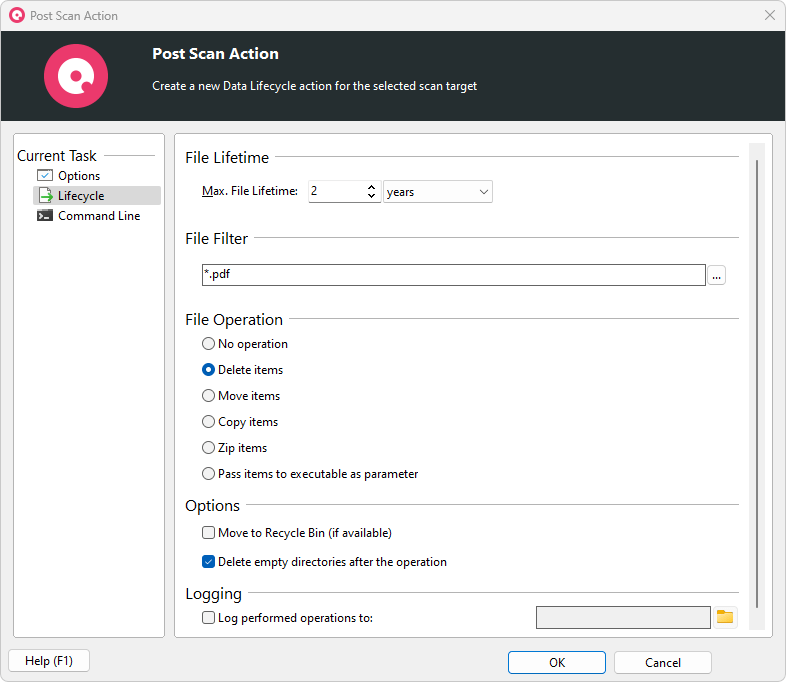Data Lifecycle Management in 3 Steps
Are you having trouble organizing data on your storage systems over a long period of time? Reclaim your time and let a Data Lifecycle Management process do it for you.
With SpaceObServer, you can easily accompany your data throughout its whole lifecycle in 3 easy steps. It's easy to set up and easy to maintain. Just answer following questions:
1. Which data?
Use filters to determine exactly which data or information should be considered.
2. How long?
Set the maximum lifetime measured by the creation date of the files.
3. What should happen?
Determine whether SpaceObServer should delete, move or archive affected information. Other operations are also possible here.
SpaceObServer is trusted and loved
With SpaceObServer, we finally have the possibility to visualize for our employees where which amounts of data are located, in a clear and easy way. Now we know where our 'graveyards of data' are hidden. Using SpaceObServer, we are capable of continuously monitoring and systematically optimizing our disk space - with minimal effort and low costs.
Set up your continuous data processing
Your server storage under observation
Any questions left? Book a call now and get the free trial!

SpaceObServer DataCentral

SpaceObServer Enterprise
Frequently asked questions
What is SpaceObServer?
SpaceObServer is the storage management and reporting solution for your servers. It observes storage on your system continuously and archives file system information in a SQL database.
What's the difference between TreeSize and SpaceObServer?
While TreeSize can show its full strength when scanning smaller systems, SpaceObServer is the solution for medium to large server landscapes.
TreeSize scans file system structures as needed and holds a snapshot of the scan in your system memory. SpaceObServer, on the other hand, archives all needed file system information in a backend database to calculate size development.
SpaceObServer shows you detailed statistics from the start and lets you apply filters without the need of any rescan.
See our comparison for more information:
Which storage systems does SpaceObServer support?
SpaceObServer can observe Windows servers as well as SharePoint, Amazon S3 Cloud Storage, Azure Blob Storage, Exchange Servers and Linux/Unix server systems.
Does SpaceObServer transmit sensitive data?
No, SpaceObServer does not transmit any kind of sensitive data from your storage systems.
SpaceObServer collects file system information only locally in the scan database.
Do I need SpaceObServer DataCentral or Enterprise Edition?
SpaceObServer offers two editions: DataCentral (former: Standard Edition) and Enterprise.
DataCentral is your solution for simple scanning of multiple storage systems without the need for automation.
With the Enterprise Edition, on the other hand, you can scan multiple servers and benefit from automated reporting, Data Lifecycle Management as well as OLE Automation.
See our comparison for more information.
Does SpaceObServer require a license for access?
Yes, SpaceObServer does require the SpaceObServer Client Access Single License, comparable to a CAL.
But every purchase of SpaceObServer regardless of the edition comes with a SpaceObServer Client Access license.
Additional clients beyond this single access license do require licensing via the SpaceObServer Client Access Add-On. It also includes the Remote Client for SpaceObServer as an additional software.


